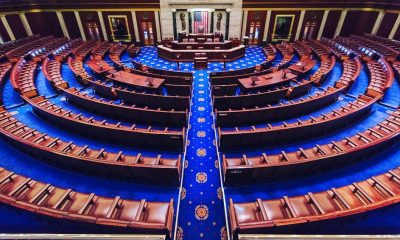Art and Culture
Philippine Flag 101
A symbol of national identity, sovereignty, freedom and independence, a country’s flag is undoubtedly among a nation’s biggest sources of pride.
The sight conjures up a plethora of emotions, including one of thankfulness; for to belong somewhere is perhaps one of humanity’s greatest needs. No matter the misgivings one may have, or the shortcomings of one’s nation, having a land to call your own is essential to the make-up of our very being. And nothing better represents this sense of belonging than the national flag. Just watch any Pacquiao fight and you’ll know exactly what I mean.
A country’s flag serves as its rallying point, in times of crisis and dire need; as evidence in the aftermath of super typhoon Yolanda (Haiyan) in November 2013. Set against a backdrop of devastation, flags were hoisted from atop of houses and buildings reduced to rubble; a statement of hope: We shall overcome.
On a bigger scale, national identity brings order and organization, and enables us to make sense of this world in which we live. Of course, the opposite side of that pole is less the ideal: national identity can also rip us apart; as in times of war, with country pitted against country, flag versus flag.
With Philippine Independence Day to be celebrated on June 12 by Filipinos on local shores, as well as by kababayans on shores across the globe, let’s increase our flag IQ with some facts every Pinoy should know:
- The first flag was (shock of shocks) “imported.” Aguinaldo, who designed the elements of the flag while in exile, commissioned its fabrication in Hong Kong. It was sewn by Marcela Mariño de Agoncillo, a daughter of a rich family in from Batangas, who moved to Hong Kong when her husband, Filipino lawyer and jurist Don Felipe Agoncillo, was exiled. The original flag was predominantly hand-sewn of fine silk, with Agoncillo being assisted by her eldest daughter, five-year-old Lorenza, and Mrs. Delfina Herbosa de Natividad, Jose Rizal’s niece. The process was far from easy, and took its toll on their eyesight and hands. At one point, they had to redo the flag after the rays of the sun were not in the proper direction. The flag was finished in 5 days; with the women’s arduous labour.
- The first unfurling of the flag was NOT on Independence Day, as we know it. It was – contrary to popular belief – on May 28, 1898, in Cavite City, then known as Cavite Nuevo (New Cavite) or Cavite Puerto (Cavite Port) where the Cuartel Heneral (the revolution’s HQ), the Teatro Caviteño, was located. Spanish officials had learned of a shipment of ammunition which had arrived at the Cavite port two days earlier and had been shipped to a revolutionary bailiwick in the small barrio of Alapan, Cavite. They sent a group of a little under 300 soldiers to the barrio, with the intent of confiscating the weapons. They, however, did not anticipate the fierce fight the revolutionaries would put up. The gun battle – which lasted from 10 in the morning until 3 in the afternoon – resulted in the victory of the Filipinos, however unlikely that was thought to be. The exuberant revolutionaries took their Spanish prisoners to the headquarters in Cavite that same day, where Gen. Emilio Aguinaldo, leader of the Philippine Revolution, waved the Philippine flag, to cheers and shouts of victory. The Katipunan had its own flag, but this was the first time ever that the flag of a dreamed-about, sovereign Philippines was displayed. It was an inspirational act, meant to celebrate what was considered their first major victory, and to fuel the revolutionaries onward in the battle.
- The second and official unfurling – which most erroneously believe to be the first time the flag was displayed in public – was on June 12, 1898 in Cavite el Viejo (“Old Cavite”, now Kawit), Cavite Province. This was the Declaration of Independence, as proclaimed by Gen. Emilio Aguinaldo: The independence of the Filipinos and the birth of the Philippine Republic “under the protection of the mighty and humane North American Union.” June 12 is celebrated to date as Philippine Independence Day.
- The Philippine flag, in accordance with Republic Act No. 8491 (the Flag and Heraldic Code of the Philippines), is twice as long as it is wide, so that the diagonals of the equilateral white triangle lie on the lines connecting the opposite corners of the flag.
- It is sectioned into three main parts: a royal blue field, symbolizing peace, truth, and justice; a scarlet red field, symbolizing patriotism and valor; and a white triangle, symbolizing equality and brotherhood. The first shade of blue used in the flag was patterned after the Cuban flag, and gradated through the years from shades of sky blue to navy blue. Republic Act No. 8491 has decreed it at royal blue.
- Historically, however, the document of the Declaration of Independence says that the white triangle signifies the emblem of the revolutionary Katipunan.
- The document also says that the flag’s colors commemorate the flag of the United States as a manifestation of gratitude for American protection against the Spanish during the Philippine Revolution; something that would probably cause more than a raised nationalistic eyebrow or two.
- The eight-rayed golden sun commonly perceived as the center of the white triangle is actually not exactly dead-center of the triangle, but shifted slightly to the right. The sun symbolizes unity, freedom, people’s democracy, and sovereignty, with each ray representing one of the first eight provinces that started the 1896 Philippine Revolution against Spain. The eight provinces are listed officially as as Manila, Cavite, Bulacan, Pampanga, Nueva Ecija, Tarlac, Laguna, and Batangas. Original documents have Bataan listed instead of Tarlac.
- The official design features an eight-ray sun, whose rays are spaced 3.75°apart. There is an oft-mistakenly used eight-ray sun, whose rays are spaced 5° apart.
- There are three five-pointed stars, one for each of the triangle’s points, representing the three major geographical island groups that comprise the Philippines: Luzon, Visayas and Mindanao. Although originally, one of the stars represented the island of Panay (rather than the entire Visayas region).
- The flag was banned during the American occupation starting from 1907 until 1919 when the law that banned its display was repealed.
- It is the only national flag which may be hoisted inverted – red side up – when the Congress of the Philippines has declared a “state of war”. Normally, the flag is hoisted blue side up.
- The flag is required by law to be hoisted or displayed at certain establishments, like government buildings, official residences, public plazas, and schools every day throughout the year. However, local citizens may also display the flag on their house, doorways, and such from May 28 to June 30. As long as you remember that it is prohibited by law to use the flag as a drapery, curtain, festoon, table cloth, or fashion accessory (among other regulations). Neither can the flag be displayed in discos, bars or nightclubs, casinos, and other places of “vice and frivolity.”
Happy Philippine Independence Day! Let’s wave our flag high!






















